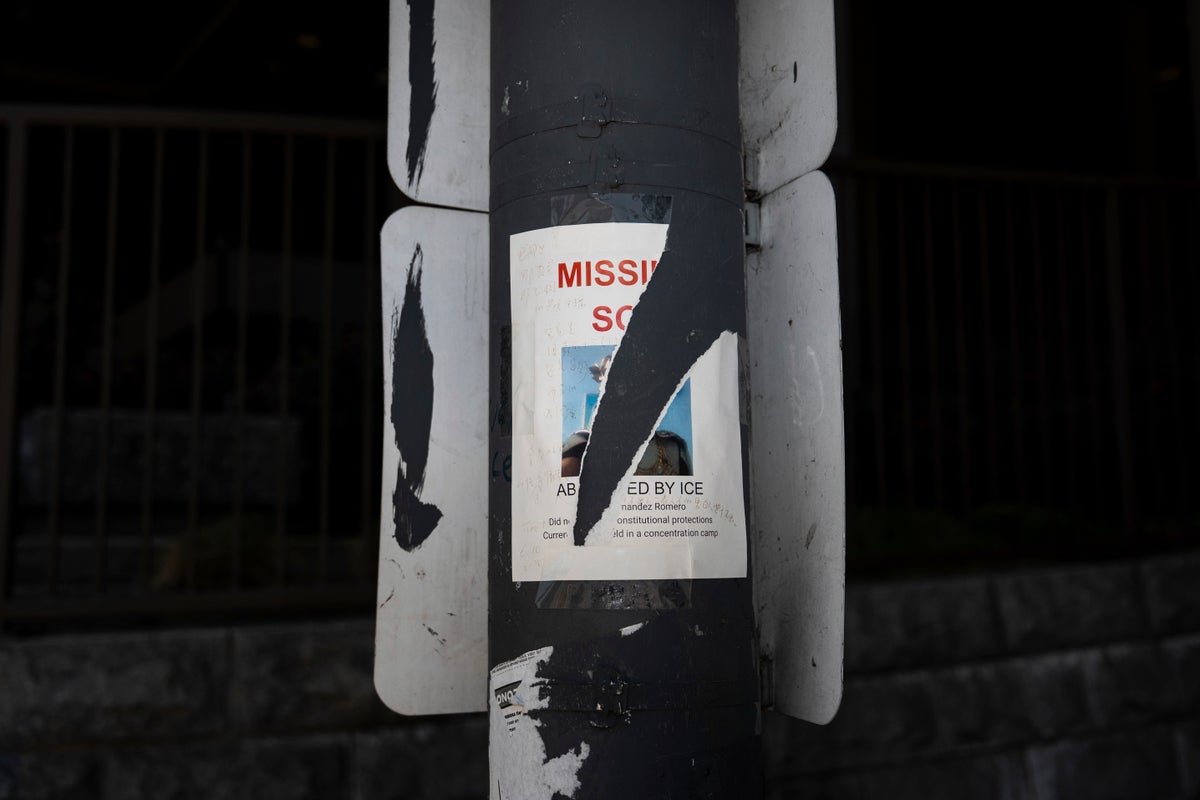Your support helps us to tell the story
From reproductive rights to climate change to Big Tech, The Independent is on the ground when the story is developing. Whether it’s investigating the financials of Elon Musk’s pro-Trump PAC or producing our latest documentary, ‘The A Word’, which shines a light on the American women fighting for reproductive rights, we know how important it is to parse out the facts from the messaging.
At such a critical moment in US history, we need reporters on the ground. Your donation allows us to keep sending journalists to speak to both sides of the story.
The Independent is trusted by Americans across the entire political spectrum. And unlike many other quality news outlets, we choose not to lock Americans out of our reporting and analysis with paywalls. We believe quality journalism should be available to everyone, paid for by those who can afford it.
Your support makes all the difference.Read more
Three months after aggressive immigration raids began in Southern California, everyday life has shifted. Masked agents pull up, and neighbors mount quick protests. Priests bring Communion to homes. Children log on to class instead of walking to school. Still, people step out — the rent is due. Work doesn’t pause.
The Trump administration’s focus on arresting people suspected of living in the country illegally has transformed life for tens of thousands of people in Los Angeles County, the nation’s most populous county. About a third of the county’s 10 million residents are foreign-born, and an untold number of people are now trying to live without being seen.
Day laborers still gather at a Home Depot lot in Los Angeles’ Van Nuys neighborhood, despite several raids there by immigration agents. A new sign outside a day labor center warns law enforcement not to enter the building without a warrant. Antonio from Guatemala — who, like other migrants interviewed for this article, didn’t want to reveal his full name because he doesn’t want to identify himself to the authorities — shows up in his pickup truck and with a whistle, ready to warn if agents from U.S. Customs and Immigration Enforcement are coming. He said he is vigilant all the time but refuses to live a life in hiding.
Street vendor Carmen, an immigrant from Guatemala, glances both ways as she fills a cup with fruit juice on a Los Angeles sidewalk. Juan Manuel runs his clothing subcontracting shop with its folding metal shutter shut and locked from the inside. Another contractor couple works at a sewing machine with their three daughters beside them, instead of sending the girls to summer programs. They work at night instead of during the day to avoid detection.
The smell of tear gas has long since faded outside the downtown Metropolitan Detention Center, where National Guard troops and Marines stood guard in response to protests. The armored vehicles are gone, but a lone American flag still hangs upside down from a pole placed nearby.
On Olvera Street, a popular Mexican marketplace, young server Diego Garcia smiles as he takes an order. Elsewhere, vendors glance up whenever helicopters fly by. Missing person signs are posted by families searching for loved ones they believe have been arrested by immigration officers.
For these communities, life swings between courage and caution. Making ends meet comes first for many. Fear is just an inconvenience.
___
This is a documentary photo story curated by AP photo editors.
